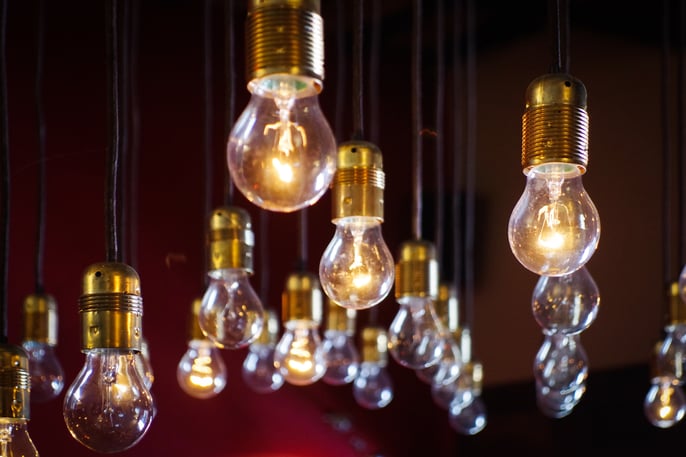
We can't function without light, and yet for migraine sufferers bright light can trigger a headache that sends them scurrying to a dark room. Since all types of light can be hazardous to migraineurs, here are a few ways to control the light around you.
Lighting at Home
Since the changes in the law regarding the sale of incandescent light bulbs, many of us have switched to either CFL bulbs or halogen ones. Most of us are unaware that we have any choice in the matter, and this is not good news for migraine sufferers if light sensitivity makes alternatives to incandescent light problematic.
LED, CFL and halogen bulbs give off a different type of light, and if you’re not light sensitive the difference won’t bother you. You may notice a change in the quality of light, seeing new harshness or a different color ambience perhaps, but it won’t cause you pain. Many migraineurs find the new bulbs actually trigger migraines.
The good news is that incandescent bulbs are still available, since a loophole in the regulations allows for continued manufacture and sale of rough service light bulbs.
These bulbs work the same way as the incandescent lights we’re used to, but they’re made for industry and are stronger so they withstand high levels of vibration or shocks. They’re available in a wide range of wattages and styles, and can be a real help to migraineurs who found making the switch to alternatives has increased their migraine frequency.
Lighting at Work
Obviously, lighting at work is harder to control than lighting at home, but there are still things you can do to help ease the number of migraine triggers in the workplace.
Dealing with fluorescent lights: Overhead fluorescent lighting is popular in offices, but causes problems for many people who suffer from migraines. Here are some options to try:
- Fit a diffuser. Diffusers work to make fluorescent light appear more natural, and if the lights in your office don't have them maybe your employer would be willing to fit them. It's worth investigating.
- Attach a filter, which removes certain elements of the light to make it easier on the eyes.
- Use spectacles designed to filter red and blue light. These can help prevent migraine attacks, and are worth speaking to your doctor about. They are available as actual spectacles or as clip-ons if you already wear prescription glasses.
- Fluorescent lights often have an annoying flicker, and this can trigger migraines. Proper maintenance helps to prevent flickering but, sometimes, light fittings are overlooked. If the light flickers in your office or workplace, speak to whoever is responsible for maintenance and ask if it can be fixed.
Optimize Your Computer Monitor
Mostly we don't think about changing the appearance of the screen, and many people don't even realize there may be a more optimal setup that could reduce the risk of migraine.
- Change the refresh rate. A computer screen renews the image it shows many times each second. When the refresh rate is set very low, the screen can flicker. It may be imperceptible but is enough to cause eyestrain. Change it yourself in Computer Preferences, Display Properties, Advanced Settings, and increase the refresh rate frequency. If you are not allowed to do this yourself at work, speak to your supervisor and ask that it be done for you.
- Depending on the type of work you do, an alternative display setting might suit you better. For example, there's a display mode for those who deal mostly with images or videos, and another for text.
- You may need to adjust the brightness of your screen, which should ideally be no brighter than the surrounding light. If you work in a dim office, turn your screen brightness down accordingly.
- Make sure the text on your screen is big enough. If you have to squint to read it, you can increase the size to make reading more comfortable.
Protection from Sunlight
Sunlight, especially during winter months when the sun is lower in the sky, can be an unpredictable, sudden migraine trigger. Short of becoming a hermit there's no way to avoid sunlight, but you can protect yourself from its unpredictable nature:
- Wear dark glasses: When the sun is bright and glinting, no-one will be surprised to see you outside in sunglasses. Protect yourself against sudden light flashes or reflections that can provoke migraine in a second.
- Always use the sunshades in the car: When it's sunny out, pull down the sun visor over the windshield and leave it down even if the sun is behind you when you set out.
The effects of light can be unpredictable, so it's wise to take precautions wherever possible. Whether at home, at work or out and about, protecting yourself from bright light can help keep you migraine free.

